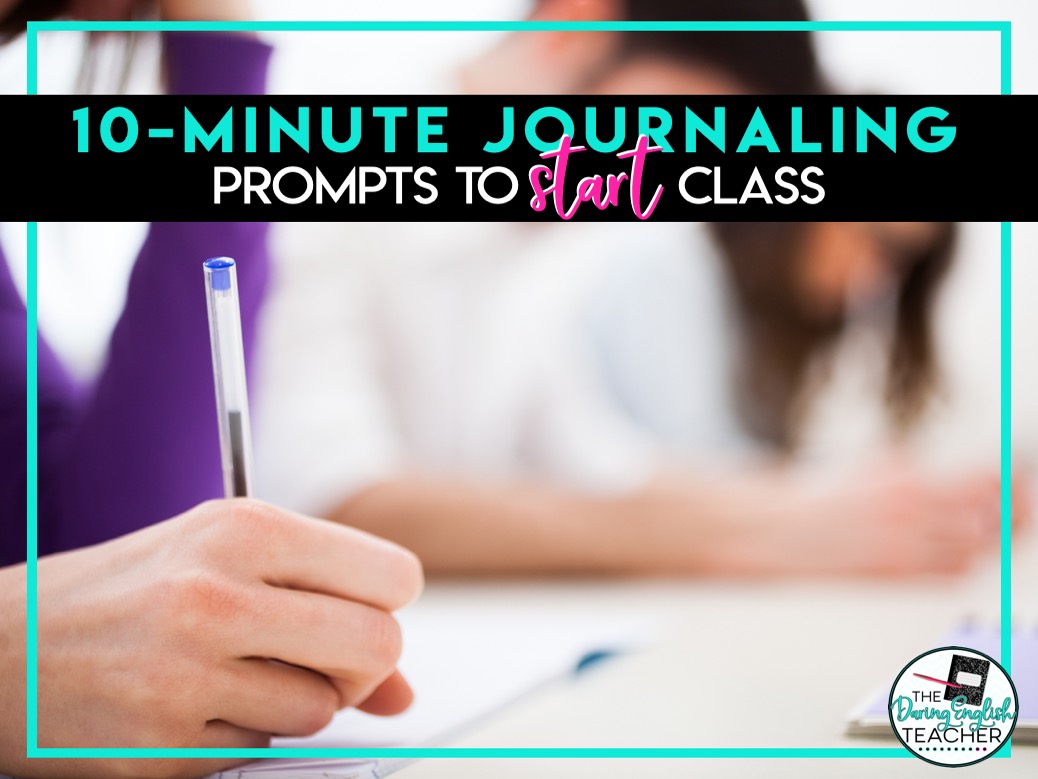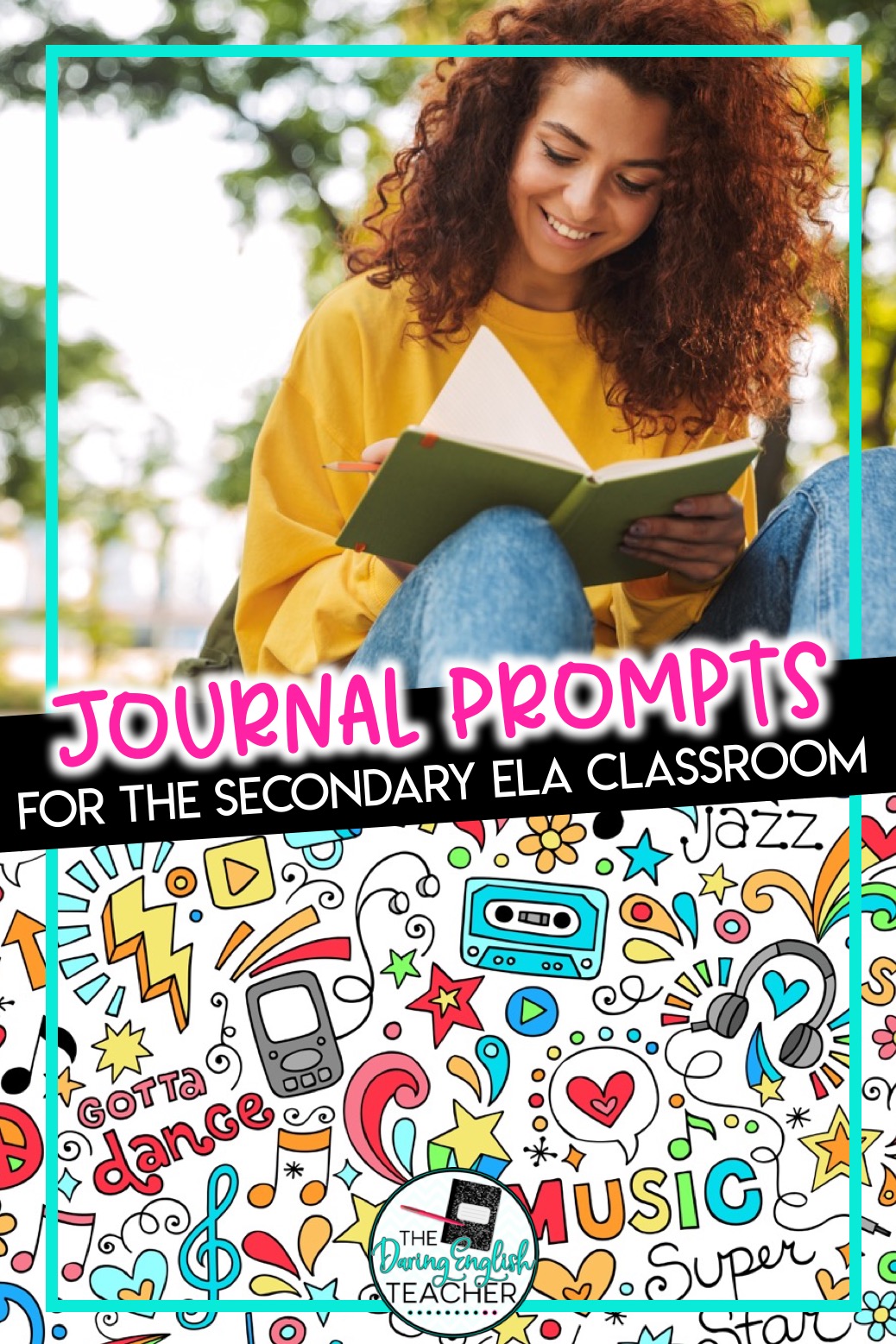Journaling at the start of class is an excellent way for middle school and high school students to get into the right mindset to learn. Some students may enter your English classroom ready to dive into a text or a writing assignment, but many students need to ease into the material, and getting thoughts flowing on paper is a great way to do this. While it may be sufficient to tell students to write for a few minutes about whatever is on their minds, it can be helpful for many students if you provide guidance or a general topic for their writing.
Here are four 10-minute journaling activities to use at the start of the secondary English class.
1. Picture journaling in the secondary ELA classroom
For this exercise, find an interesting photo online and project it onto the board so that all your students can see it. Instruct them to write for 10 minutes about the picture. They can engage in creative writing and write a story, or students can jot down descriptive details of the photo. At the end of the 10 minutes, ask if your students want to share their stories. They can either do this from their seats or from the front of the classroom.
If you have a larger class or if your students are not all comfortable sharing, split the class into pairs so people can share with one other person. It is always fun to see how similar or different the stories are. By listening to other stories, students will grow as writers because they will listen to different takes on the same photo. Everyone has a different approach to writing, and no two stories will be identical. This exercise will get students ready for more formal writing assignments, and it is perfect for sparking creativity in your classroom. Picture journaling can also be turned into a one-pager activity.
2. Facilitating a group story in the classroom
This writing activity is a fun assignment to involve your whole class in one story. Start by writing the first line of the story at the top of a piece of paper. For the digital classroom, this can also be done within a shared Google Doc. The story can be anything you think would be an excellent fit for the class’s daily lesson. To simplify things, you can also start the story with “A long time ago…” It can be more complex, such as “I woke up one morning, not knowing that it would be the craziest day of my life”.
Once you start the story, give the piece of paper to one student, and have the student write the next line of the story. Or, if done digitally, call on a student to add in the following sentence.
Once the first student completed the sentence, they should fold the paper so the first line is covered, and only the second line is showing. Have them pass the paper around the whole class, each student seeing the most recent line, adding their sentence, and folding the paper again. This process will ensure that no one will know the whole story until the end of the exercise. For digital activities, stay inside the collaborative Google Doc and make the text white.
Repeat this process once or twice, depending on how large your class is, and then unfold the paper and read the whole story to the class. These stories can get entertaining and crazy and will get your students excited to jump into their classwork. This activity can also be done as a group poem if you are working on poetry with your class.
3. Include all the words: A fun creative writing exercise
Sometimes, it is best to engage students in creative writing. In this journaling activity, choose five words and write them on the board. Students then have to write a quick story using all of the words. This activity can produce an infinite number of stories, and it is always interesting to see what words different students focus on most. For example, if the words are “monster,” “clock,” “moon,” “playground,” and “ocean,” a student may write their story about a monster and incorporate the other words along the way. Another student may write their story about a trip to the beach and briefly mention the other words.
This journaling and creative writing activity centers on students’ first reactions to seeing the words, and it is interesting to see what kinds of stories come from a simple list of words.
4. Choose a side: A starter for teaching argument writing
This is an excellent journal assignment during a unit focused on persuasive writing. In this activity, give students a prompt that requires them to choose a side and argue for or against it. Topics can range from being lighthearted and straightforward to more complex and mature. Some examples include:
- Do you believe in ghosts? Why or why not?
- If you could either relive one day in the past or jump to a day in the future, which would you choose?
- What is better, cake or pie?
- What is the best season and why?
- Should colleges still use standardized tests for admission?
- Should schools still have dress codes?
- Is advancing technology helping or hurting us?
- Should voting be mandatory?
Choosing a side in a journaling assignment is a great way to practice persuasive and argumentative writing skills. It is also an effective way to start a conversation about beliefs and ways to defend beliefs while being respectful of others.
When I teach argument writing in my high school English classroom, I like to use a prompt similar to this one as a warm-up on writing days. I might have students identify three arguments for or against their topic.
All of these 10-minute journaling activities are a great way to kick off the class, whether you’re looking to spark creativity or help students get in the right mindset for learning in the classroom.



